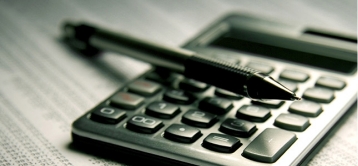Credit cards feel great because you can buy stuff now and pay later. The trouble is, that same freedom can quietly hook you into a cycle of debt. Maybe you miss a payment by a single day, and suddenly the bank slaps on a late fee that wipes out your rewards. Or you think the minimum payment lets you relax, but the interest keeps stacking up like snow on a sidewalk.
Understanding these little traps is half the battle. The other half is watching them carefully so they don’t catch you by surprise. Let us break down the slip-ups most people make and see how a few smart moves can save you money and headaches.
Cleaning up a credit-card bill means knowing exactly what you’re working with. Your running balance shows every dollar borrowed and not yet paid, while the stated interest rate tells how much extra money a lender will demand if you wait too long.
Miss the due date once, and that smooth 20-percent APR can suddenly feel like a shark circling a wounded fish. And if you only send the minimum month after month, the cost of coffee you bought last winter might annoy you all summer long.
Credit card accounts often sneak in extra charges that catch even seasoned users by surprise. When you spot those hidden fees up front, you can dodge surprise costs and keep your money where it belongs—in your pocket. Simply paying attention is the first trick to steering through the credit-card jungle without getting scratched.
I. Introduction
Swiping a plastic card sure beats digging for cash, yet the freedom can bite back if you’re not careful. Jumping on impulse rewards sounds nice, but a single late payment can undo all that glitter in a heartbeat. Knowing where the traps sit lets you enjoy the perks while walking the line between convenience and chaos.
Lots of shoppers end up paying more than they planned because they ignore how interest and annual fees really work. A little curiosity about that fine print goes a long way toward keeping your balance healthy and your peace of mind intact. Let’s break down the mechanics so your wallet doesn’t end up as the lessons laboratory.
II. Understanding Credit-Card Payments
At its core, a credit-card balance is the bill you run up every time you swipe—plus whatever else the bank tosses on at the end of the month. Watching that figure is a lot like glancing at the fuel gauge before a road trip; waiting until the light blinks is rarely a smart call. If the number climbs beyond what you can pay off quickly, you’re flirting with interest that sticks around longer than the purchases did.
Interest rates on credit cards matter more than most people realize. A single month of keeping a balance can turn a small purchase into a surprisingly big bill thanks to that ever-looming percentage. Figure out what your cards charge, make a spreadsheet if you want, and you’ll spend a lot less on money that the plastic company is basically renting to you.
What Is a Credit-Card Balance?
Your credit-card balance is simply how much you owe right now. It pulls together every dinner tab, late fee, Hello Fresh coupon code, and even that sneaky 0.99 cents interest that snuck in while you binge-watched last month. The number can jump overnight, so a daily glance prevents bad surprises at payday.
How Credit Card Interest Rates Work
Card issuers love abbreviations, so you’ll often see APR printed next to the interest rate. Annual Percentage Rate is just a fancy way of saying the price tags they slap on borrowed money. The number is never carved in stone; it can slide up or down based on your credit score, on-time payments, and whether you snagged a straight-up rewards card or one of those premium metallic wonders.
Skip the full payment one month, and the remaining balance starts collecting interest like weeds in a garden. Ignore that once, then twice, and suddenly the bill looks a lot bigger than you planned. Knowing the rate, even roughly, gives you power over whether to swipe or sit on your wallet for another week.
Understanding (and Avoiding) Credit Card Fees
A last-minute sign-up often hides a stack of fees you never saw coming. Annual charges, missed due-dates, and those sneaky foreign transaction tabs can chew up cash like popcorn at a movie. Most of the damage happens because people glance at the big bonus and skip the footnotes.
A Little Prevention Goes a Long Way
Spend five extra minutes on the fine print and you might save a hundred bucks over the year. Cards that wave the annual fee are out there, and some even toss in bonus points that cover it if you do pay. Set a phone reminder for payment day so the due date doesn’t slip, and think twice before swiping abroad unless your plastic promises zero extra charges.
Common Payment Pitfalls
Hitting send on the minimum? Congratulations, you just signed up for a long, expensive marathon. Minimum payments stretch the timeline and swell the interest, quietly chaining you to the account for years.
Missing a due date is like slipping on an icy sidewalk; you know you’ll feel it right away. Most cards slap on a late fee and then flag your account with a credit-hit that lingers for months.
Some people only pay what the statement shows as the minimum. That tiny number looks friendly, yet it stretches repayment into years while interest quietly gobbles up your money.
Swiping the full balance before the next bill arrives is the bigger win. No finance charges pile on, and the credit-utilization meter stays cool so your score stays cool too.
Overseas or at an ATM, hidden charges can jump out like surprise fireworks. Foreign-transaction fees and cash-advance costs sneak in when you least expect them, pushing a small purchase into pricey territory.
Missing a credit card due date once or twice can sting, but let it happen repeatedly and the pain multiplies. Some banks quietly jack your interest rate or tack on a penalty APR that turns a single late slip into months of extra charges. Mark the calendar, set a reminder, whatever it takes—staying on schedule keeps both your balance and your credit score in check.
Uncommon Credit Card Fees to Watch For
Typical statements list annual fees and late payments, yet a few sneaky charges rarely receive a spotlight. Balance-transfer costs top that list, usually sitting at 3% to 5% of whatever debt you slide over from another card. Even a small percentage can gobble up the savings promised by a headline-grabbing low rate. Foreign-transaction fees behave similarly, popping up when you buy overseas or shop online with a merchant based outside the U.S. Reading the fine print is time well spent if you want to sidestep surprise dollars on next month’s bill.
Best Practices for Managing Credit Card Payments
Five-dollar trips to the coffee shop can balloon into debt if those charges linger unpaid each month. To cut interest and speed up payoff, focus on paying more than the card’s minimum—no matter how tempting the minimum looks. A little extra today often saves a lot tomorrow.
Never Miss a Deadline with Autopay
Setting your card on autopilot for at least the minimum keeps those pesky due dates in the rear-view mirror. You’ll dodge late fees, and the bill gets taken care of without the usual panic.
Once the basics are covered, throw any extra cash at the account charging the highest interest. That small tweak makes your dollar work overtime.
Don’t forget to peek at your statement every month. A quick look can show where the money goes and flag mistakes before they sink your budget.
Smart Moves for Paying Your Bill
- Paying wisely means aiming higher than the minimum every single month. That extra ten bucks chips away at interest and shortens the life of the debt.
- Many people set payments for the day after payday, which leaves the rest of the budget intact.
- Timing like that keeps spending in check and steers the paycheck where it’s needed most.
- Budgets shift, so revisit yours every few weeks. Small updates can keep the plan on track and the balances falling.
Crushing Debt with a Plan
- Tackling credit card balances isn’t just guesswork; it’s strategy, plain and simple. Start with the account that charges the most and pound it first.
- Money counselors call this the avalanche method, because the higher-rate pile melts away faster. Less interest paid means more room for other goals.
The snowball method has a folksy feel—paying little debts first. That quick win lifts spirits, even if the bigger bills stare you down. No matter which path you walk, bump the monthly check above the bare minimum. That single move ripples through interest charges the same way rain softens hard ground. Automatic payments sort themselves. They slide out of your bank at the right hour, so you dodge late fees and gray-hedged penalties that sneak in overnight. Setting the feature takes five minutes and saves the headache of remembering.
Pay Attention to the Fine Print
The fine print hides in plain sight, usually at the back of the welcome packet. When borrowers skip it, surprise fees jump like a pop quiz nobody studied for. Text buried under squint-worthy fonts often whispers about interest rate increases or odd payment deadlines. Miss those clues, and the cost of borrowing quietly swells.
Flipping through that dense section can spare hundreds, maybe even thousands, in extra charges. Knowing whether a grace period really exists or if a six-month balance-transfer offer flips to 25% can steer smarter spending. Concrete information is a kind of financial superpower.
Tips to Avoid Credit Card Payment Pitfalls
Automatic payments are the safety belt of credit cards; buckle up and the chance of flying off course shrinks. Late fees lose their punch once a bill is paid on time, every time. Toss in an extra five or ten dollars whenever a room in the budget opens. Doing so knocks down the balance faster and slashes interest the same way pruning a tree invites fresh growth.
A good starting place for keeping your money in check is to log every purchase in a budgeting app, a mobile wallet, or the trusty old Excel sheet. Bookmark your bank statement, check it twice a month, and look for charges that feel out of place; hesitation signals trouble.
Most money headaches fit neatly inside the habits you build or skip.
When you pay your bills on time and know exactly how much debt you carry, the rest of personal finance shrinks down to small choices.
Things like spending on interest-free days or dodging late fees protect the number on your credit report and keep lending doors open later.
Digging into the fine print is more than reading; it is a financial lifeboat.
A list fee, a foreign-swipe charge, or a late-payment bump can turn a good deal sour when you least expect it.
Rattling off the balance, projecting the math, and paying well above the minimum if possible.
Do it month after month, and the numbers start to feel less like chains.
You stay proactive, the bills stay tamed, and credit cards become tools, not traps.


